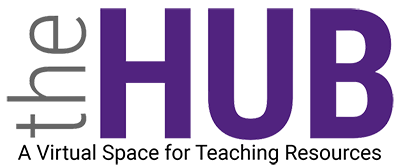Prompt Engineering Basics: https://lnkd.in/e3Ww6pDz ChatGPT Prompts Mastery: https://lnkd.in/eKzysUbR Intro to Generative AI: https://lnkd.in/eFP9u3xW AI Introduction…
Connectivism is defined as “actionable knowledge, where an understanding of where to find knowledge may be more important than answering how or what that knowledge encompasses” (Duke, Harper, and Johnston, 2013, p. 7). “
A nascent learning theory, connectivism, promotes that students should merge thoughts and knowledge to their benefit (Western Governors University, 2021). As the name implies, this theory’s focus is on the connections we make as learners. Stephen Downes (2007) writes, “At its heart, connectivism is the thesis that knowledge is distributed across a network of connections, and therefore that learning consists of the ability to construct and traverse those networks.”
These connections include those we make with technological resources, such as social media and databases, which provide significant learning opportunities (Western Governors University, 2021). First espoused by George Siemens and Stephen Downes in 2005, connectivism posits the concept of “nodes and links” – learners and sources of knowledge are nodes, while the connections are the links (Western Governors University, 2021). In this theory, learning involves more than being aware of specific facts or concepts; it involves knowing where to find the information you need. It is about knowing which node you need to connect with and how to get there.
Incorporating Connectivist Activities Into Your Classroom
Since connectivism advocates technology in such a profound way, providing ample opportunities for digital learning is the first step to building a connectivist classroom (Western Governors University, 2021). The use of social media for student-to-teacher and student-to-student interaction and collaboration is relatively easy to incorporate technology, as is the use of learning management systems, such as Blackboard and Canvas. The use of various learning apps is a fast and inexpensive way to bring digital options to your students. When you have learners connecting to other learners or knowledge resources in consequential ways, you arguably promote connectivism.
References
Cognitivism. (n.d.). Open University. https://www.open.edu/openlearncreate/mod/page/view.php?id=147079
Connectivism learning theory. (2021, May 27). Western Governors University. https://www.wgu.edu/blog/connectivism-learning-theory2105.html
Constructivism: creating experiences that facilitate the construction of knowledge. (n.d.) University of Buffalo. Curriculum, Assessment, and Teaching Transformation. http://www.buffalo.edu/catt/develop/theory/constructivism.html
Downes, S. (2007, February 5). What connectivism is. https://www.downes.ca/post/38653
Ertmer, P.A. and Newby, T.J. (2013). Behaviorism, cognitivism, constructivism: comparing critical features from an instructional design perspective. Performance Improvement Quarterly. 26(2), 43-71. https://onlinelibrary.wiley.com/doi/abs/10.1002/piq.21143
Lawless, C. (2019, July 30). Applying cognitive learning theory to your corporate learning strategy. LearnUpon. www.learnupon.com/blog/cognitive-learning-theory/
McLeod, S. (2020). Behaviorist approach. Simply Psychology. https://www.simplypsychology.org/behaviorism.html
What is the behavioral learning theory? (2020, May 29). Western Governors University. https://www.wgu.edu/blog/what-behavioral-learning-theory2005.html

This Post Has 0 Comments